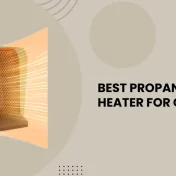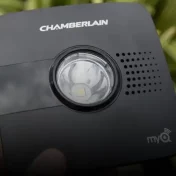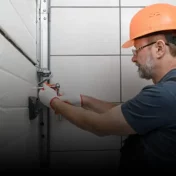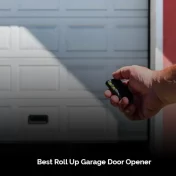Polyurea and polyaspartic coatings are renowned for their durability, resistance to high temperatures, and longevity.
They have been acclaimed by homeowners and industry professionals alike for offering a resilient finish to concrete surfaces.
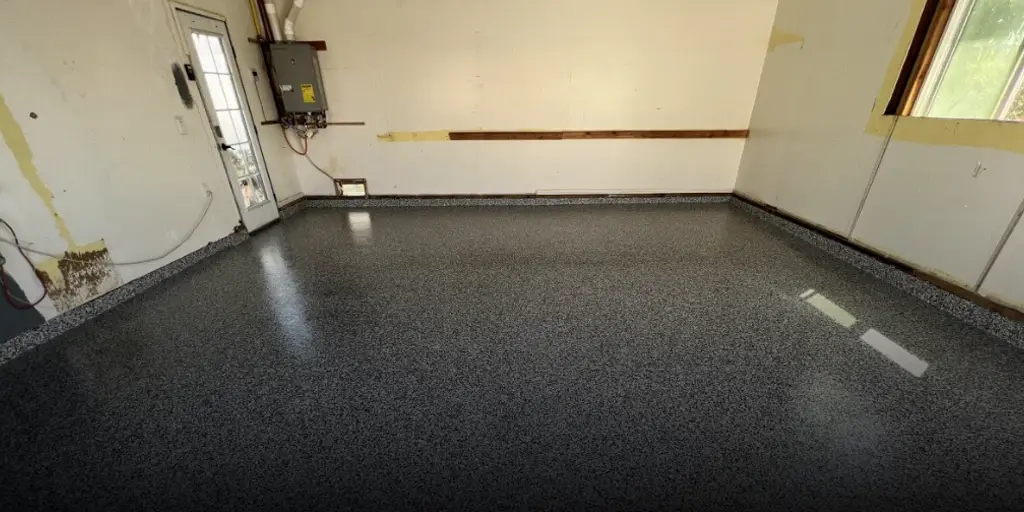
While these coatings bring with them numerous advantages, it’s vital to understand the potential issues one might encounter. This guide aims to shed light on some of these problems and offers insight into how to avert them.
Key Takeaways:
- Polyurea and polyaspartic coatings offer durable finishes.
- Like all products, they come with certain challenges.
- Understanding these challenges can help users prevent them.
Problem #1: Adhesion Issues with Concrete
One of the primary concerns with polyurea and polyaspartic coatings is their potential failure to bond with the concrete. This can arise when the moisture content in the concrete is excessively high.
Polyurea coatings bond with concrete by seeking out moisture. If they encounter too much moisture, they stop bonding.
If your coating ends up merely sitting atop the concrete surface, rather than penetrating it, it won’t exhibit the durability and longevity you expect. It might behave more like paint or epoxy and may not cure correctly.
Prevention Tips:
- Moisture Test: Always conduct a moisture test on the concrete surface before coating.
- Moisture Barrier: If the moisture content is high, consider applying a moisture barrier first. This primes the concrete, ensuring a better bond.
Problem #2: Formation of Air Bubbles
Another common issue in the application of polyurea and polyaspartic coatings is the formation of air bubbles during the mixing process.
These coatings consist of a base and top coat, which are prepared by mixing different solutions at specific ratios. If this mixture is stirred at a high speed, air bubbles can become trapped within it.
Air bubbles in the coating can persist through the application process and eventually lead to chipping and peeling as they dry and pop.
To Prevent Air Bubble Issues:
- Mixing Speed: Ensure that the coating is mixed at the appropriate speed. Knowledge and skill in mixing are crucial for an issue-free application.
Proper mixing techniques can prevent air bubble-related problems, leaving you with a smooth and durable coating.
Problem #3: Partial Evaporation of Coatings
Incorrect mixing ratios can lead to coatings that partially evaporate during the curing process. Similar to paint, these coatings must be applied to achieve a specific thickness, or “mil.”
When the coating is not mixed correctly, it can evaporate as it cures, making it thinner, less durable, and shorter-lived.
How to Avoid Partial Evaporation:
- Follow Manufacturer Instructions: Coating supplies typically come with precise instructions for correct mixing. Always adhere to these guidelines.
By accurately mixing the coating, you ensure its longevity and performance as intended.
Problem #4: Improper Curing due to Mixing Ratios
Improper mixing ratios not only affect the thickness of the coating but also its ability to cure properly. Polyurea and polyaspartic coatings typically have a cure time of 24 hours.
However, if the mixing ratio is incorrect, it’s possible that the coating will not cure at all.
An easy way to test if a coating is fully cured is the thumb test. If it remains gummy or shifts under pressure, it hasn’t cured properly.
To Avoid Improper Curing:
- Correct Mixing: Ensure the coating is mixed at the right ratio, as specified in the manufacturer’s instructions.
- Perform the thumb test to verify that the coating has fully cured.
Proper mixing ratios and curing are essential for a long-lasting and reliable coating.
Problem #5: Color Fading Over Time
Polyurea and polyaspartic coatings are known for their UV resistance, ensuring they don’t fade when exposed to sunlight. However, not all coatings are UV-resistant.
Fact: If a non-UV-resistant coating is used in areas with high UV exposure, color fading and deterioration can occur.
To Prevent Color Fading:
- Specify UV Resistance: When coating outdoor areas like sidewalks, driveways, or patios, ensure that the coating is UV-resistant. Check product specifications and consult your contractor if necessary.
Choosing the right type of coating is crucial for maintaining its color and integrity over time.
How to Choose the Right Contractor
Ensuring a successful polyurea and polyaspartic coating project hinges on hiring the right contractor. A contractor with a proven track record of expertise in handling these coatings is essential for avoiding issues.
“The best way to avoid running into any problems is to find a high-quality contractor with documented experience in polyurea and polyaspartic coatings.” – Expert Contractor
Key Considerations When Choosing a Contractor:
- Past Projects: Examine their portfolio to gauge their experience.
- Client Testimonials: Read reviews and reach out to past clients if possible.
- Transparency: A good contractor should be able to explain the coating process thoroughly.
- Questions Answered: They should be able to address all your questions and concerns.
Choosing the right contractor is crucial to prevent problems and ensure a successful coating project.
Polyurea vs. Epoxy: Which is Right for You?
Polyurea and epoxy are two of the most common types of concrete coatings. While both have their merits, the choice depends on your specific needs and preferences.
Comparing Polyurea and Epoxy:
- Durability: Polyurea is known for its exceptional durability, outperforming epoxy in this aspect.
- Cost: Epoxy is generally more budget-friendly than polyurea.
- Prep Time: Polyurea typically has a quicker cure time compared to epoxy.
- Maintenance: Epoxy may require more maintenance over time.
- Use Case: Consider where you’re applying the coating – indoor or outdoor.
Real-world examples of where polyurea or epoxy may be the better choice for various applications.
You May Also Enjoy Reading:
- Garage Door Won’t Open With Wall Switch
- Best Garage Door Lubricant
- How to Reset Garage Door Keypad Without Code Liftmaster
Conclusion
In conclusion, polyurea and polyaspartic coatings offer a range of benefits, including durability, resistance to high temperatures, and a long lifespan.
However, it’s crucial to be aware of potential issues that can arise during their application. By understanding and addressing these problems, you can ensure a successful coating project that will stand the test of time.
Key Takeaways:
- Proper moisture testing and barrier installation can enhance bonding with the concrete.
- Mixing at the correct speed and ratios helps prevent air bubbles, evaporation, and curing issues.
- UV-resistant coatings are essential for outdoor areas exposed to sunlight.
- Selecting an experienced contractor is vital for a successful project.
- Consider your specific needs when choosing between polyurea and epoxy coatings.
FAQs
Can I apply polyurea and polyaspartic coatings on outdoor surfaces?
Yes, these coatings are suitable for outdoor surfaces, but it’s important to use UV-resistant coatings in areas with high sun exposure.
How long does the curing process take for these coatings?
Polyurea and polyaspartic coatings typically have a cure time of 24 hours, with the ability to walk on them within as little as six hours.
Are there DIY options for applying these coatings?
Yes, DIY kits are available, but for best results, it’s recommended to hire a professional or thoroughly educate yourself on the installation process.
Can polyurea coatings be used in cold climates?
Yes, polyurea coatings are suitable for cold climates, providing a durable solution even in extreme weather conditions.
Do I need to reapply these coatings over time?
Properly installed polyurea and polyaspartic coatings should last for many years without the need for frequent reapplication.
